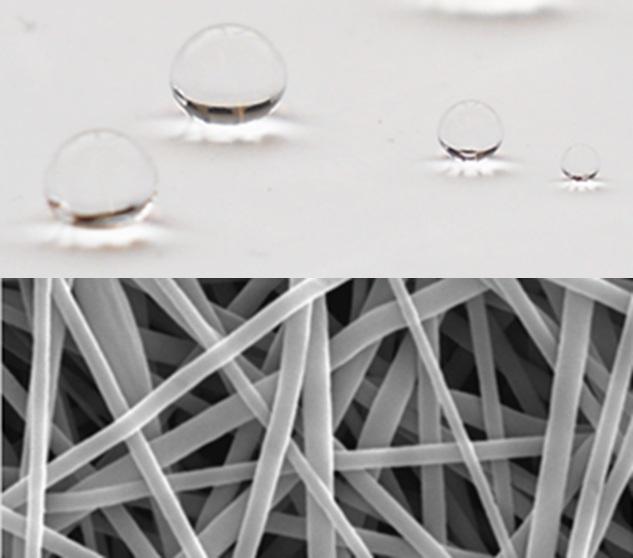Electrospun Membranes for Clean Water
| Personnel: | Fei Guo, Simon Choong, Ateeque Malani |
Water purification by membrane technology encompasses the desalination of saline water, including brackish water, seawater, and hypersaline waters such as those resulting from hydraulic-fracturing gas-extraction operations. It also includes the purification of recycled wastewater, such as that associated with the reuse of problematic high salinity oil-in-water emulsions occurring in enhanced oil recovery operations.
This research project aims to develop advanced membranes for water treatment with better permeability, improved fouling resistance, and excellent mechanical strength using novel fabrication methods such as electrospinning that are scalable to large areas. In this work, water purification by oil water separation and membrane distillation systems are being studied systematically, with particular attention to the materials science of the membranes themselves, including their chemistry and morphology. Understanding the interaction of water and other fluids with the fibrous membrane, such as superhydrophobicity or oleophilicity, form an essential component of this work. Deeper insights into the nature of these 3-phase contact interactions are pursued through molecular modeling and advanced visualization techniques. The coupling between membrane structure, mechanical properties like membrane compressibility and hydraulic permeability is being analyzed. The relationships between system design, operating conditions, membrane properties, scaling, and fouling processes on the membranes are also being examined.

|
Figure: Water droplets on the iCVD treated Nylon fiber mat |
For Further Information
- M. Ma, R.M Hill, G.C. Rutledge, "A Review of Recent Results on Superhydrophobic Materials Based on Micro- and Nanofibers", J. Adhesion. Sci. Technol. 2008, 22, 1799-1817.
Abstract and full text, courtesy of IngentaConnect - J.A. Lee, Y.S Nam, G.C. Rutledge, P.T. Hammond, "Enhanced Photocatalytic Activity using Layer-by-Layer Electrospun Constructs for Water Remediation", Adv. Funct. Mater 2010 20(15), 2424-2429.
Abstract and full text, courtesy of Wiley Online Library - A. Malani, A. Raghavanpillai, E.B. Wysong, G.C. Rutledge, "Can dynamic contact angle be measured using molecular modeling?", Phys. Rev. Lett. 2012, 109(18), 184501.
Abstract and full text, courtesy of American Physical Society - L.T. Choong, Z.Khan, G.C. Rutledge, "Permeability of Electrospun Fiber Mats Under Pressure Driven Flow", J. Membr. Sci. 2013. (in press)
updated: 10-24-2013
Webmaster
Copyright Notice